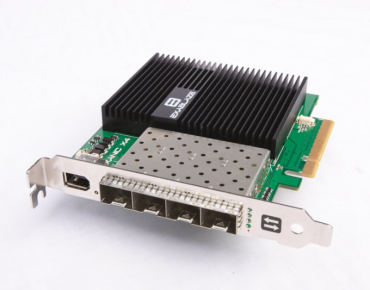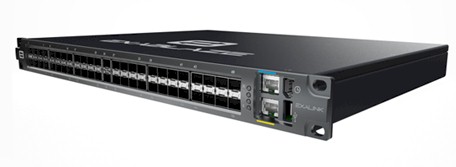High Frequency Trader Spins Out Custom Network Hardware

Australian high frequency trading firm Zomojo knows a thing or two about low latency trading and has been building its own hardware and trading platform software for the past five years. Now, it is taking some of its hardware commercial through a new company called Exablaze so others can buy it.
Zomojo was founded in Sydney in 2005, and the development teams of both the high frequency trader and its Exablaze spinoff are still located there. Exablaze was created in May of this year, and the company is headquartered in Melbourne. Matthew Chapman, one of Zomojo's founders, is CTO of both firms and says that Exablaze is trying to shoot the gap between Mellanox Technologies and Solarflare in the high-speed network interface card market.
"My experience with customers is that they find Mellanox cards slightly faster than those from Solarflare, but that Solarflare cards are easier to use," Chapman tells EnterpriseTech. In tests run by Exablaze, the Mellanox ConnectX-3 adapter had a latency of around 1.6 microseconds running raw Ethernet traffic (60 byte frames) from an application out to the fiber network and back, and a Solarflare Ethernet card running at 10 Gb/sec speeds could do it in around 2 microseconds. The Exablaze ExaNIC x4 card could do the round trip in a shade under 1 microsecond – 950 nanoseconds, to be precise. Jumping up to 1.5KB frames, the latency for the ExaNIC x4 comes to 2.7 microseconds.
Exablaze is working with the Securities Technology Analysis Center (STAC) to run its ExaNIC x4 through the STAC-N1 benchmark paces to show the low latency that the card provides.
The ExaNIC x4 is a full-height PCI-Express 2.0 card that slides into an x8 server slot. It has four 10 Gb/sec Ethernet ports and uses SFP+ cabling (either fiber or copper). The card can do timestamping on all received frames and on the most recent transmitted frame at a resolution of 6.2 nanoseconds. The card also has a pulse per second (PPS) input to synchronize the ExaNIC card with external clock sources and compare timestamps across multiple machines and geographies. It can also do port forwarding between ports 1 and 2 on the card with a latency of 170 nanoseconds, and ports 1 through 3 can mirror to port 4. Significantly, the network card can have its own external power source so bridging and mirroring continue to operate even if the server that the card is plugged into loses power.
The Exablaze interface card is currently using a field programmable gate array (FPGA) as its main brain. Chapman says that Exablaze does not have the sales volume to do a custom ASIC for its Ethernet controller, and this is one reason that it has to charge $2,500 a pop for its card. But, given the latency advantages it provides, Chapman says that there is enough interest with proprietary trading shops to start with the FPGA approach and build a business. Over time, as Exablaze gets established, the plan is to sell larger volumes of cards to the trading operations of the big banks, who have a longer testing and buying processes but who buy more cards. Once volumes ramp, Exablaze can then switch to an ASIC and lower the price on its cards.
Exablaze has drivers for the ExaNIC x4 card for all of the Linuxes that are popular among financial services shops: Red Hat Enterprise Linux, SUSE Linux Enterprise Server, Canonical Ubuntu Server, and Debian. Chapman says that Exablaze is working to give its software stack the kind of polish it will need to compete with Solarflare.
Exablaze has another product it is peddling called the ExaLink 50, which is a Layer 1 physical network connection device. It allows for any network port to be connected to one or many other network ports. This Layer 1 switch has 50 ports with SFP+ links and a port-to-port latency that ranges from 2.4 to 4.6 nanoseconds, according to Chapman. (If the ports are close to each other in the center of the switch, the latency is lower, and the maximum latency is between ports 1 and 50.) Just to give you a send of how fast that is, light travels about a meter in a fiber optical cable in 5 nanoseconds.
The ExaLink 50 is based on a commercial ASIC, but Chapman refused to identify it for competitive reasons. It is not a switch ASIC, Chapman teased, but rather a device that was designed for a different application that has been repurposed as a Layer 1 device driver.
Layer 1 devices have a number of uses in trading shops. First, they are used as a kind of electronic patch panel so you can dynamically reconfigure the links between any two devices that share ports on the switch. Such switches are also used for market data feed consolidation, redirection, and multicasting, and they are also used for latency monitoring and measurement on the network.
The ExaLink 50 costs $30,000.











